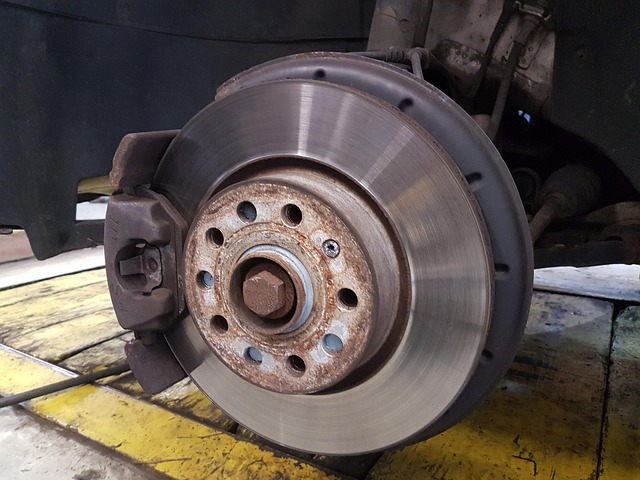Understanding brake wear patterns is crucial for optimizing Select Brake Replacements. Driving style and conditions impact pads and rotors differently. Regular inspections focus on pad thickness and rotor integrity to predict maintenance needs. Recognizing typical wear enables informed decisions, maximizing component lifespan and ensuring road safety. Promptly addressing faulty brakes prevents accidents and costly repairs, especially for motorcycles and electric vehicles. Selecting correct replacement parts tailored to vehicle weight, speed, and conditions is vital for optimal performance and safety. Regular maintenance extends brake life through gentle driving habits, tire pressure checks, and modern warning systems, managing costs effectively.
Are you tired of pricey brake replacements? Learn how to save money by understanding common wear patterns and recognizing key warning signs. This guide breaks down everything from identifying worn brake parts to selecting the right components for your vehicle. Discover cost-effective tips that empower you to maintain your brakes efficiently, ensuring safety without breaking the bank. Start saving on select brake replacements today!
- Understanding Brake Wear and Tear Patterns
- Common Signs Indicating Brake Replacement Need
- Selecting the Right Brake Parts for Your Vehicle
- Cost-Effective Tips for Brake Maintenance
Understanding Brake Wear and Tear Patterns

Understanding Brake Wear and Tear Patterns is crucial for vehicle owners looking to save on Select Brake Replacements. Different driving conditions and styles can lead to varied wear patterns, affecting both brake pads and rotors (or drums). For instance, aggressive driving or frequent stop-and-go traffic can cause rapid deterioration in the disc brake systems, leading to increased brake noise diagnosis and reduced braking efficiency. Conversely, consistent highway driving might result in more even wear, prolonging the life of automotive brake technology components.
Regular inspection is key to identifying potential issues early on. By examining brake pads for thickness and checking rotors (or drums) for warping or damage, drivers can anticipate maintenance needs and prevent costly unexpected failures. Moreover, understanding typical wear patterns enables vehicle owners to make informed decisions when it comes to replacing brakes, ensuring they get the most out of their automotive brake technology investment and maintaining optimal safety on the road.
Common Signs Indicating Brake Replacement Need

Many drivers often overlook regular brake inspections, only seeking attention when they notice a problem. This can lead to costly repairs or even safety hazards. Knowing the common signs of a faulty braking system is essential for maintaining your vehicle’s performance and safety. One of the first indicators that your brakes may need replacement is unusual noise during braking. Whether it’s squealing, grinding, or a high-pitched whining sound, these noises often signal worn-out brake pads or rotors.
Another telltale sign is vibration or pulsing felt in the pedal when applying the brakes. This could be an indication of warped rotors or issues with calipers. Additionally, if your vehicle pulls to one side during braking, it might suggest a problem with the brake fluid, master cylinder, or even a misaligned wheel. Regular motorcycle brake maintenance or checks for electric vehicle braking systems are crucial to ensure optimal performance and safety on the road. Promptly addressing these signs can help prevent accidents and save you from unexpected brake failures.
Selecting the Right Brake Parts for Your Vehicle

When it comes to selecting the right brake parts for your vehicle, understanding your specific needs is key. Different cars and trucks have unique braking systems designed to handle varying weights, speeds, and driving conditions. Choosing best brake replacements that match your make and model ensures optimal performance and safety.
Focusing on high-quality components, especially when addressing potential brake sensor issues, can prevent future problems. Today’s automotive brake technology offers a range of options, from conventional to advanced systems. By researching and selecting the appropriate parts, you can save on expensive repairs and ensure your vehicle stops securely and efficiently. Remember, choosing the right brake replacements is an investment in both your safety and your wallet.
Cost-Effective Tips for Brake Maintenance

Staying on top of your vehicle’s brake maintenance is a key aspect of ensuring both safety and cost-effectiveness. Regular checks and simple DIY tasks can significantly extend the life of your brakes, saving you money in the long run. One of the most cost-effective tips is to be mindful of your driving habits. Aggressive braking and hard cornering put extra strain on brakes, so maintaining a smooth and gentle driving style can help delay replacement.
Additionally, keeping an eye on tire pressure and wear patterns can provide valuable insights into brake health. Many modern vehicles also have warning systems that notify you when a component, including brakes, needs attention. Taking advantage of affordable brake replacements, such as tire and brake packages, offered by many automotive service centers, is another strategic move. These packages often include both minor repairs and part replacements, ensuring your vehicle’s braking system operates at its best while staying within budget. For more extensive whole car brake jobs, remember that regular maintenance can prevent the need for complete overhauls.
By understanding brake wear patterns, recognizing common warning signs, choosing the right parts, and implementing cost-saving maintenance tips, you can significantly extend the life of your brakes and save on costly replacements. Remember, regular attention to your vehicle’s braking system is key to ensuring safety and maintaining control on the road. Select the best brake replacement options for your vehicle today and drive with peace of mind.
